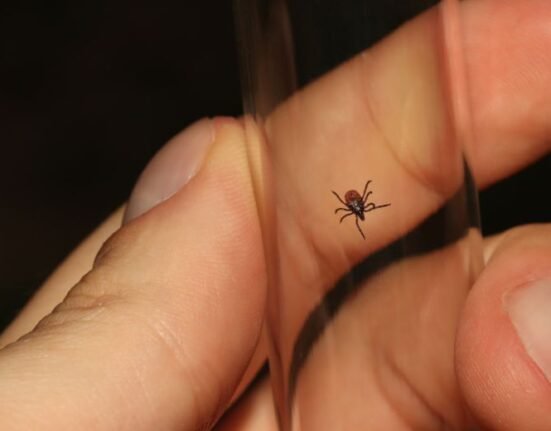Researchers at Mount Sinai’s Icahn School of Medicine in New York and the Johns Hopkins University School of Medicine discovered 35 genes that are overly active in people with chronic Lyme disease.
This could make early diagnosis of the disease easier. In Lyme disease, the bacteria slowly reproduce within a host, producing far fewer numbers and making detection more difficult. The standard two-tier test for Lyme disease only detects about 35% of early/acute Lyme disease.
More than 14 percent of the global population currently has tick-borne Lyme disease or has previously been infected, a new study suggests. More than 1 in 7 people worldwide are currently infected or have previously had this illness. The condition’s symptoms vary, but they can include fatigue, brain fog and pain for those who have received antibiotic treatment for Lyme disease.
“We wanted to understand whether there is a specific immune response that can be detected in the blood of patients with long-term Lyme disease to develop better diagnostics for this debilitating disease. There still remains a critical unmet need, as this disease so often goes undiagnosed or misdiagnosed,” said Avi Ma’ayan, PhD, Professor, Pharmacological Sciences, and Director of the Mount Sinai Center for Bioinformatics at Icahn Mount Sinai, and senior author of the paper. “Not enough is understood about the molecular mechanisms of long-term Lyme disease.”
The study researchers sequenced the RNA of 152 patients with post-treatment Lyme disease. They compared the data with RNA sequenced from 72 patients with acute Lyme disease — earlier symptoms, such as a rash or facial paralysis — and 44 controls without the infection.
The investigators observed differences in gene expression and found that most of the post-treatment Lyme disease patients had a distinctive inflammatory signature compared with the acute Lyme disease group.
Researchers further compared the gene expression of those with Lyme disease with that observed in patients with other infectious diseases. Then, they used machine learning to shorten the list even further.
They pared the list down to 35 distinctive biomarkers that distinguish people with either type of Lyme disease from those without the condition. In a news release, researchers say they plan to use the biomarkers to develop a diagnostic test that could identify the condition in other patients.
Earlier this year, researchers from Johns Hopkins along with scientists from the University of California, San Francisco, developed a panel of 31 biomarkers that allowed them to accurately identify Lyme disease in 95.2 percent of patients.
According to the seroprevalence study amidst the world population, Central and Western Europe and Eastern Asia are the regions of the world where the reported prevalence of the infection is highest. At the other end of the scale, the regions with the lowest reported seroprevalence were the Caribbean (2 percent), Southern Asia (3 percent), and Oceania (nearly 5.5 percent). The study is published

